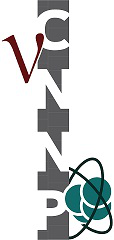Speaker
Description
The Recoil Directionality project (ReD) within the DarkSide Collaboration aims to characterize the light and charge response of a liquid argon (LAr) dual-phase Time Projection Chamber (TPC) to neutron-induced nuclear recoils. The main goal of the project is to probe for the possible directional dependence suggested by the SCENE experiment. Furthermore, ReD will have the possibility to study the response of a LAr TPC to very low-energy nuclear recoils. Sensitivity to directionality and to low-energy recoils are both key assets for future argon-based experiments looking for Dark Matter in the form of WIMPs.
ReD consists in the irradiation of a miniaturized LAr TPC with a neutron beam at the INFN, Laboratori Nazionali del Sud (LNS), Catania. Neutrons are produced via the reaction p($^7$Li,$^7$Be)n from a primary $^7$Li beam delivered by the TANDEM accelerator of LNS. A $\Delta$E/E telescope, made by two Si detectors, identifies the charged particles ($^7$Be) which accompany the neutrons emitted towards the TPC. The core detector of ReD is a small custom-made double phase LAr TPC, having sensitive volume of 5×5×5 cm$^3$. The ReD TPC uses all the innovative features of the DarkSide-20k design: in particular the optoelectronic readout based on SiPM and the cryogenic electronics. It is thus a valuable test bench of the technology which is being developed for DarkSide-20k and for the future project Argo. Neutrons scattered from the TPC are eventually detected by using an array of nine 3-inch liquid scintillator (LSci) detectors. All LSci are placed such to tag recoils having the same energy, i.e. the same scattering angle with respect to the incident neutron, but different angle with respect to the drift field of the LAr TPC, thus allowing to search for a possible directional response.
The integration of the three detector systems was performed within several test beams performed in 2018-2019, using the TANDEM accelerator of LNS. Neutrons were produced by sending a $^7$Li 28 MeV beam onto a set of CH$_2$ targets having thickness between 250 and 400 $\mu$g/cm$^2$.
The physics measurement is expected to take place during the early months of 2020. This contribution will report about the current status of the project, including the physics results possibly obtained in the meanwhile, and on the short- and medium-term plans. The feasibility is also discussed of a wider-purpose facility at INFN-LNS, targeted to the calibration of detectors of interest for Dark Matter or rare events searches with tagged neutrons.

